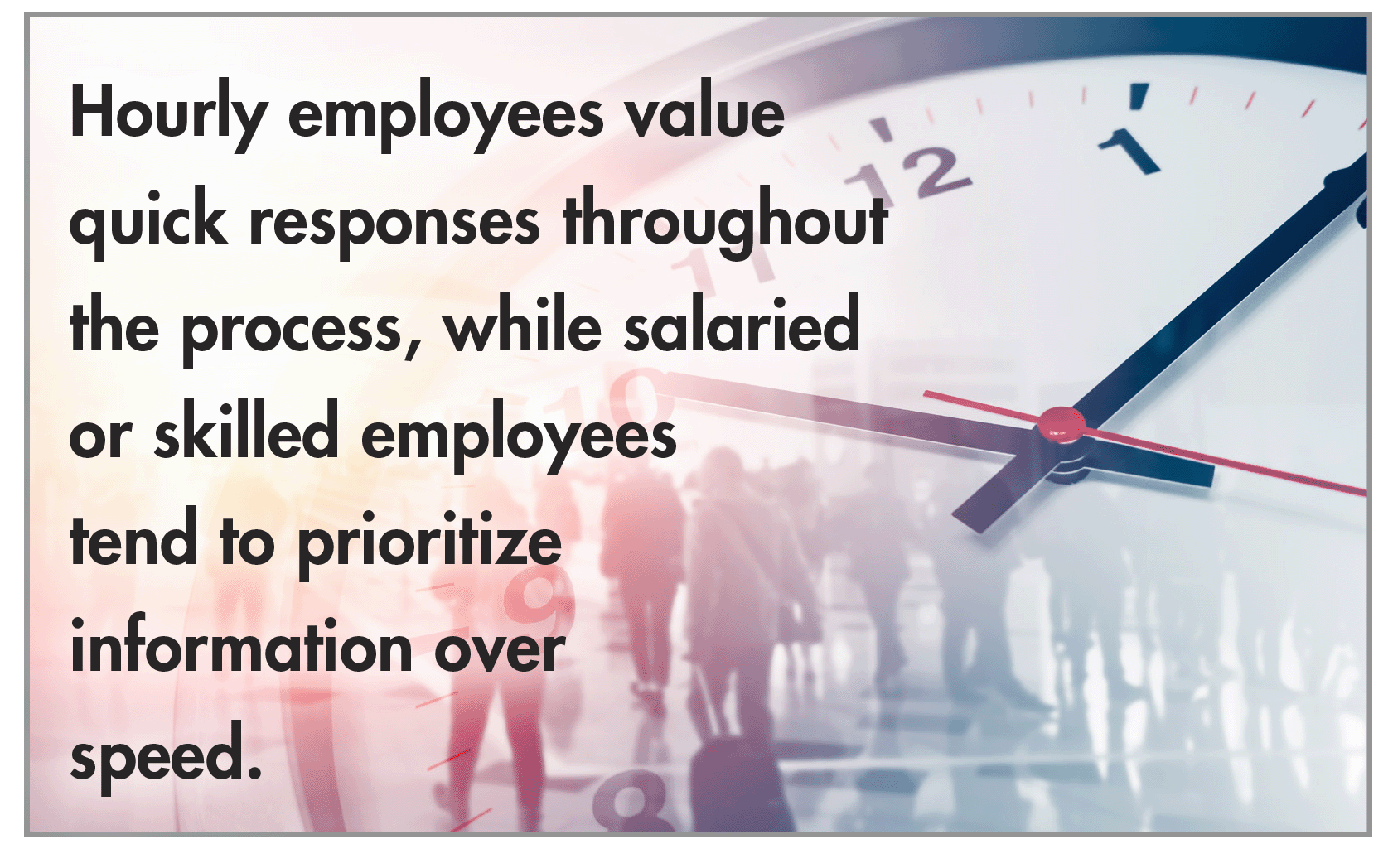Organizations can find the best hourly and salaried employees by segmenting the talent pool.
By Tierney McAfee
All job candidates are not created equal, and organizations would do well to remember that during the hiring process.
Although it may seem like common sense to use different application processes for hourly versus salaried employees, Adam Godson, vice president of global technology solutions for strategic recruitment process outsourcing partner Cielo, says that companies with a large and diverse workforce often use the same hiring process for all candidates.
“Think of a hospital system that has many different types of employees, from cafeteria workers to cleaning staff to skilled staff like nurses and doctors,” Godson says. “Oftentimes, they are all hired through the same processes, but we find that organizations have better results when they target the processes to meet the different needs of those groups.”
Godson says the key difference in expectations about the hiring process among hourly versus salaried employees comes down to time. Hourly employees value quick responses throughout the process, while salaried or skilled employees tend to prioritize information over speed.
Skilled candidates also spend far more time researching the organization and potential position, while candidates applying for hourly roles do very little research early in the process.
“This is in part because people in hourly roles have a tendency to spend less time in that role,” says Greg Summers, executive vice president of high volume RPO for Cielo. “Hourly employees turn over more, so they’re more interested in very quickly determining, ‘Is this an opportunity I could potentially take tomorrow?’ versus a skilled candidate who might already be in another role and contemplating a move over the span of a four- to eight-week period.”
Another reason hourly employees tend to hit the apply button before looking into the position is that historically, companies haven’t been very good at getting back to those candidates.
“But what we do see is that as soon as they get invited for an interview, that’s when they actually do the same amount of research as a professional employee,” Godson notes. “They just do it later in the process.”
Godson and Summers agree that organizations looking to hire the best hourly talent need to act fast.

For salaried employees the candidate shelf life is longer, with Summers saying that there is generally a two-month period between when a person in a professional or skilled role decides they want to leave and organization and when they actually do. Yet this higher tolerance for slower application processes shouldn’t stop organizations from streamlining the hiring cycle for hourly and salaried employees alike.
“Most organizations ought to be conscious about just how long it takes to go through a process. Organizations often capture information from an individual to help them understand who that person is well in advance of when they need it,” says Summers. “The application process for everybody is too long, and most organizations need to figure out how to capture the information when they really need it to keep people engaged.”
Summers suggests organizations take a cue from colleges that have adopted a common application process, which allows prospective students to apply to multiple colleges using the same application.
“That makes people more likely to actually apply. And that concept of creating a hiring process that’s easier, simpler, faster, and captures information in the point that it matters, is something that all organization across all roles need to seriously consider doing,” Summers says.














